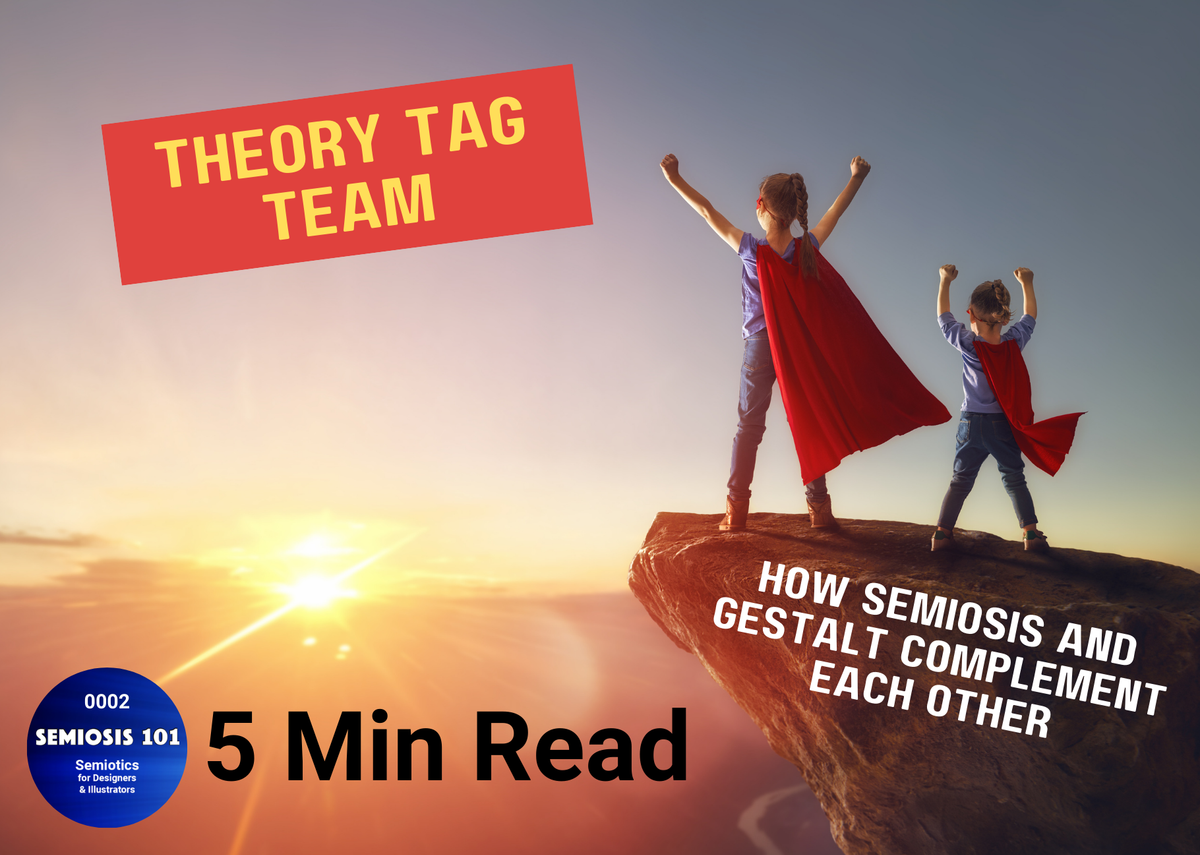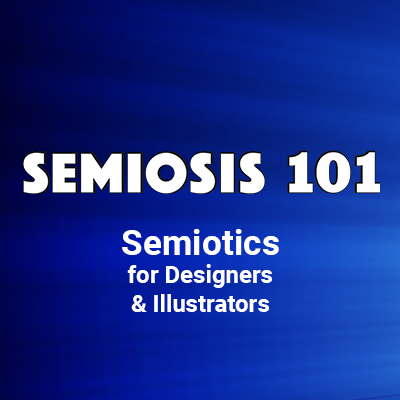BLOG 02: Theory Tag Team (or How Semiosis and Gestalt Complement Each Other)

Semiosis 101 - 5 minute semiotic read
What we see is not necessarily what we see.
That conundrum is for graphic designers and illustrators to unpack and Gestalt Theory and Semiosis helps to do just that.
Six areas of Gestalt theory are certainly an active part of any designer or illustrator’s creative tool box. So, in no particular order let’s quickly outline them.
Continuation occurs when the eye is compelled to move through one visual element and continue to another. Often this is used in typography-based logos.
Closure occurs when one element is incomplete or a space is not totally enclosed. If enough of the shape of the intended element is indicated or hinted at, the audience will subconsciously fill in the missing information.
Similarity occurs when visual elements look similar to one another. The audience will perceive them as a group or pattern. These can be similarities in colour, shape, texture or any other design element.
Proximity occurs when visual elements are placed close to each other. The position of these elements helps to portray a relationship between the separate parts. The opposite is also true.
Visual elements that are symmetrical to each other tend to be perceived as a unified group. The opposite is also true. Several symmetries can occur in one design.
Finally we have a true compositional powerhouse - Figure-Ground. The human eye differentiates a visual element from its surrounding area. A form, or shape is perceived as figure, while the surrounding area is perceived as ground. Figure-Ground works symbiotically to define each other. Balancing figure and ground is an art form in itself.
But how can Semiosis and Gestalt theories complement each other?
Gestalt theory and Semiosis can be a powerful team of underpinning theories, to enhance the effectiveness of the design and impact of illustration and graphic design. Gestalt is a psychology term used in Visual Communication Design.
In Gestalt the whole of what we see is different from the sum of the parts that construct it. It is based on the idea that we as humans tend to organise visual elements into groupings. These groupings form 'unified wholes' based on several factors including:
1. Visuals will be perceived in its simplest form.
2. Humans naturally follow lines or curves to understand.
3. The human mind will attempt to fill in detail that isn't there.
There are parallels between Gestalt theory and Peirce's Semiosis theory of semiotics. It is in these parallels that points of symbiotic power can be utilised to enhance, craft and improve the effectiveness of any designer or illustrator’s visual communication skills.
Peirce uses three terms to describe three levels of sign-action in semiotic representation of a concept: Iconic, Indexical and Symbolic. It is at the Iconic level of semiotic representation where creatives, empowered by understanding the psychology of visual perception through Gestalt, can apply Semiosis’ sign-action to craft at the Iconic level the sum of the visual ‘parts’ that helps the audience perceive the ‘whole.’
These parts of the whole are semiotically manipulated from visual elements that resemble things the audience will recognise - even at a subconscious level.





